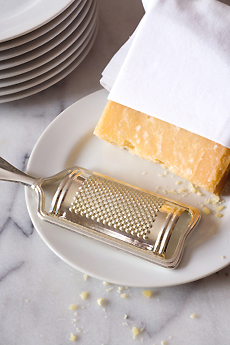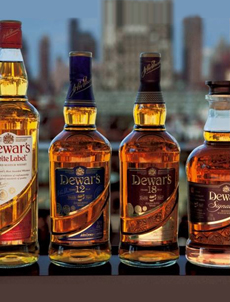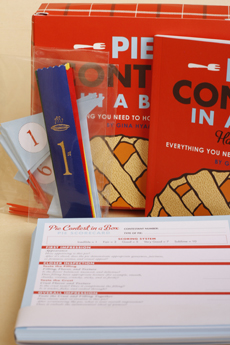BLENDED SCOTCH
Blended Scotch created by mixing the distillations (Scotches) from multiple single malt producers. By selecting particular single malts, the blender can achieve the exact flavor combination desired, with more balance and complexity.
Examples include honey and floral flavors from Highland Scotches, fruity flavors from Speyside, vanilla flavors from Lowland Scotches and peaty flavors from Islay. Dewar’s blends can contain up to 40 different single malts and grain whiskys (a whisky that contains some grains other than malted barley, such as corn, rye or wheat) to attain the perfection the blender seeks.
If you don’t know a drinker’s preference and select a single malt, it may not be the profile the recipient prefers. With a fine blended Scotch, the balance and harmony are generally enjoyed by anyone.
The proper glass† to “nose” Scotch is a sherry copita, also called a single malt whisky glass. It resembles a tulip, and can be used for any fine whisky. The lip turns outward to catch the aromas of the whisky.
Why is it there so often a gap between our preferences and our pocketbook?
While all of the Dewar’s expressions are very fine, we fell in love with the masterpiece of the portfolio, Dewar‘s Signature (upwards of $200). The nose burst with aromas of luscious Seville orange and a touch of peat. On the palate, orange and chocolate notes were accented with honey, vanilla, toffee and caramel overtones. It was dessert in a glass, and a real treat.
For everyday, we’re going back to the very affordable Dewar’s 12 Years—which, by the way, is also made in a kosher expression: Dewar’s 12 Year Old Special Reserve.
___________________
†Professionals and connoisseurs use different shaped glasses to fully enhance the flavors and aromas of fine wines and spirits. It really does make a difference!
THE DIFFERENCE BETWEEN “WHISKY” & “WHISKEY”
In Ireland and the United States, the word “whiskey” is spelled with an “e.” The British, Scots and Canadians spell it “whisky.” To be perfectly correct, you’d use “whiskey” when referring to an Irish or American product; and “whisky” when referring to the others. But most people in the U.S. use the spellings interchangeably.
Etymologists don’t know why the variations exist. The best explanation is that the Irish had whiskey first, and when the Scots started to make it, they left out the “e” to point out the difference between their spirit and Irish whiskey.
We’ll drink to that!
By the way, April 6th is Tartan Day in Scotland. It commemorates the Scottish Declaration of Independence, upon which the American Declaration of Independence was modeled.
Raise a glass of Scotch, toast and enjoy!
BEYOND SCOTCH: THE DIFFERENT TYPES OF WHISKEY
How many types of whiskey are there?
This article explains it all.
|




